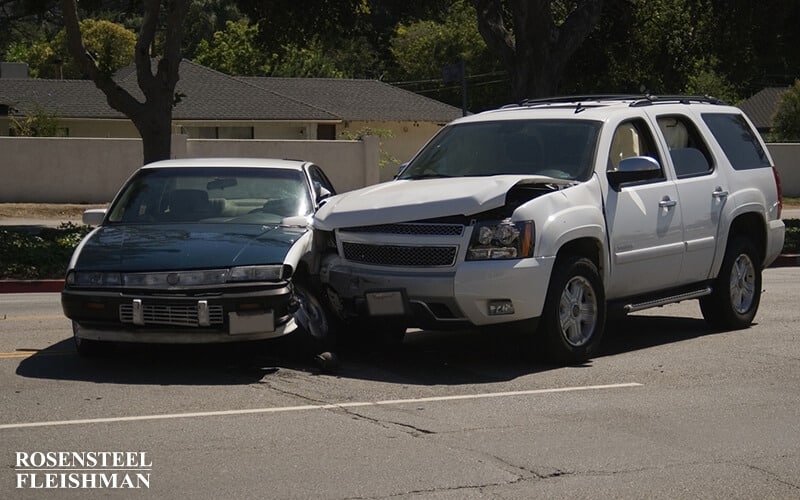It only takes one moment for life to change at work. A slip, a sudden twist, or an impact can leave you with a leg injury that affects everything from your daily routine to your long-term financial stability. Many people feel unsure about what to do next or how to protect their rights. It is […]

Self Driving Car Accidents
Autonomous, or self-driving, cars and trucks are vehicles that operate without a human driving it. They use a variety of instruments, including a number of sensors, cameras, and software, to assess the surrounding environment, road conditions, traffic lights, lane markings, curbs, other cars and pedestrians in order to safely drive.
Semi-autonomous cars and trucks, which still require a human operator, contain features like lane and braking assistance. These cars may seem to operate themselves, because drivers do not need to have their hands on the wheel during the entire drive, but they are not truly autonomous.
Currently, there are no autonomous cars for sale to the public in the United States, only semi-autonomous. Despite the public not being able to purchase autonomous vehicles, there are still some test vehicles on the road.
Advantages and Disadvantages of Autonomous Cars
There are a number of advantages and disadvantages associated with the use of autonomous vehicles. Sometimes, they overlap.
Advantages include:
- Transporting those who are not able to drive for any reason including, the disabled, people who lost their driver’s license or never had one, individuals traveling for work or vacation, and impaired individuals.
- Safety. It is estimated that human error (including distracted and drunk driving) causes more than 90% of car accidents in the United States. It is believed that the software in these vehicles is less prone to error than humans and therefore will cut down on the number of car accidents that occur each year.
- Emissions. If self-driving cars are largely electric, emissions and the effect they have on the environment would be significantly reduced.
- Reduced traffic. Self-driving cars communicating with each other would cut down on traffic congestion.
- Free time for passengers. Rather than need to focus on the road, passengers will be free to focus on other tasks, from making making phone calls to reading.
Disadvantages of of autonomous cars include:
- Lost jobs. Millions of people in the United States are employed as drivers (truck, delivery, taxi, Uber, Lyft, school bus, etc.). Autonomous cars would potentially put those people out of work.
- Safety. In an increasingly digital era, cybersecurity attacks are more and more common. If the software systems in autonomous cars were hacked, that could lead to dangerous situations on the roads.
- Privacy concerns. With autonomous cars constantly communicating with each other, passenger information and location will be more available.
- Emissions. If self-driving cars are largely gas-powered, emissions could increase significantly.
As mentioned above, while there are no autonomous cars currently for sale, there has been an uptick of semi-autonomous cars on the market. These cars have an autopilot feature which does require a driver, but allows the car to control certain things like steering, acceleration and braking. Unfortunately those cars have been involved in an increasing number of accidents over the last few years. Just last year a Tesla, whose driver was watching a movie while using the autopilot feature, crashed into a North Carolina sheriff’s office vehicle which then hit a state trooper's car. Fortunately no one was injured, but two of the three cars were totaled. The driver of the car was charged with violating North Carolina’s move-over law (the officers were on the scene because of an earlier car accident) and watching television while driving a motor vehicle.
In 2016 a Florida man was killed while using his Tesla’s autopilot feature when it hit a tractor-trailer. The crash occurred with the Tesla operating at a speed of 74 mph. Following that accident, Tesla added safety features to its cars autopilot systems but only 3 years later another Florida driver died in a similar car accident. In that case, the autopilot had been turned on 10 seconds before the car crashed into a tractor-trailer. A number of other cases have also arisen across the country.
Legal Issues
There are a number of legal issues that have arisen with respect to autonomous and semi-autonomous cars, and that have been discussed in consideration of the future when both types of cars are expected to become widely available to the public. The biggest question is - who is responsible when an autonomous or semi-autonomous vehicle hits a pedestrian or another car?
The federal government has remained largely silent about laws and regulations for semi-autonomous and autonomous vehicles, which has prompted some states to to issue their own laws and regulations. North Carolina’s answer to the uncertainty was to pass a general statute regulating fully autonomous vehicles. N.C. Gen. Stat. §20-400-403 et. seq. Some of the provisions include:
- Driver’s License. The operator of a fully autonomous car, who is using all of the car’s operating systems and truly not driving the car, does not need a driver’s license. If the operator takes control of the car at any point, then a driver’s license is required.
- Registration. Like any other vehicle, the vehicle must be registered and the registration located in the car. If a moving violation occurs, it is the registered owner who is responsible for the violation.
- Minors. Minors under the age of 12 are not permitted to travel alone in an autonomous vehicle. In addition, parents are responsible for certain violations by their minor children including failure to properly seat belt.
- Car Accident. The law provides that the same steps be undertaken as when involved in any car crash - do not leave the scene, call the police and report the car accident, exchange contact and insurance information.
- Responsibility. This is one of the more interesting questions surrounding autonomous vehicles and most likely, the one that will lead to the most litigation. In a typical car accident case, the driver is the owner of the car and assuming fault, the accident would be attributed to that driver. However, when dealing with autonomous cars, the driver isn’t actually the driving the car, so does that still make him/her responsible? If there is a software glitch, who is at fault - is it the driver because he/she owns the vehicle? The car manufacturer’s fault? The software company’s fault?
As more and more semi-autonomous, and eventually fully autonomous, vehicles take to the streets in cities like Charlotte, North Carolina, both the federal government and the state and local government will likely need to enact additional regulations to keep people safe.
Why Do I Need a Charlotte Law Firm?
The Charlotte, NC based lawyers at Rosensteel Fleishman Car Accident & Injury Lawyers are experienced car accident attorneys who can help you understand your rights and whether or not you have damages and should proceed with a claim. Please contact our office at 704-714-1450. There is no fee for an initial consultation.
Additional Car Accident Personal Injury Rideshare Accidents Articles
A dog bite that injures your hand can turn an ordinary day upside down. It is common to feel unsure about what to do next, especially when the pain and shock make it difficult to think clearly. Many people do not realize how serious hand injuries can be until they start affecting daily tasks like […]
After an accident in Charlotte, it is common to feel overwhelmed, especially if you are dealing with a broken arm and the sudden shift in your daily routine. Simple tasks can become difficult, and the physical pain often adds to the emotional frustration that follows an unexpected injury. Many people find themselves unsure of what […]
When a car accident leads to paralysis, the impact reaches every part of life. Daily routines suddenly feel different, and the simplest decisions can feel heavier than before. Many people in this situation look for clarity about what comes next and how to handle the financial and physical stress that follows. It can be difficult […]
